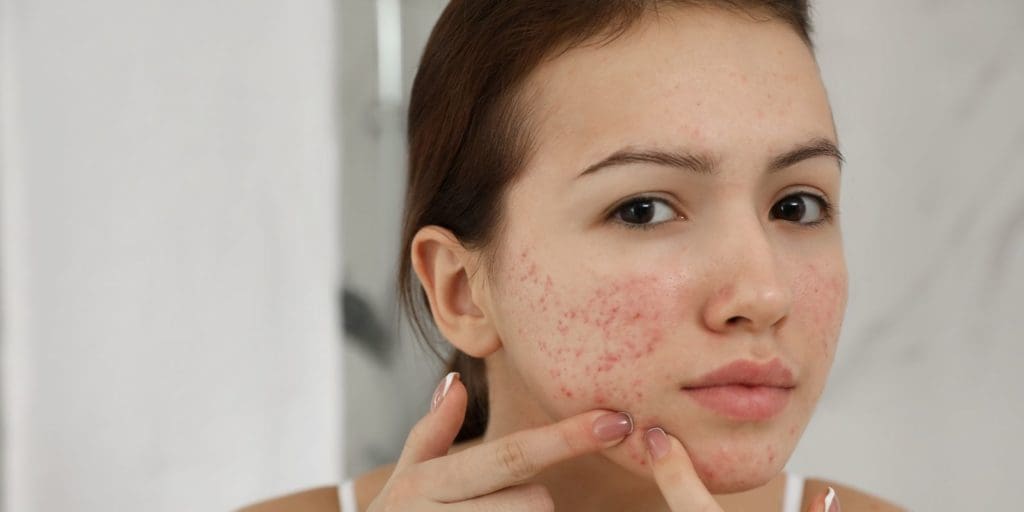Acne is a common skin problem that affects millions of people around the world, regardless of age or gender. While acne can be frustrating to deal with, the marks it leaves behind can be just as bothersome. Acne marks can take on different forms and can be challenging to treat. In this article, we’ll be discussing the different types of acne marks and how to treat them.
What are Acne Marks?
Acne marks are the residual marks left behind by acne lesions that have healed. These marks can take different forms and can be challenging to treat. It’s essential to differentiate between acne marks and acne scars, as they’re not the same thing. Acne marks are not true scars but instead, are a temporary discoloration of the skin, caused by inflammation. Acne scars, on the other hand, are permanent changes in the skin caused by damage to the skin’s deeper layers.
Types of Acne Marks
There are different types of acne marks, including:
1.Post-Inflammatory Hyperpigmentation (PIH)
PIH occurs when there’s an overproduction of melanin in response to inflammation. PIH results in flat, discoloured patches of skin that range in colour from pink to red, brown, or black. PIH is more common in people with darker skin tones, and it can take several months for the discolouration to fade.
2. Post-Inflammatory Erythema (PIE)
PIE occurs when there’s an increase in blood flow to the skin’s surface, causing redness. PIE is more common in people with fair skin tones and can take several months to fade.
3. Atrophic Scarring
Atrophic scarring is a type of acne mark that results from the loss of tissue. Atrophic scars are depressions or indentations in the skin and can be shallow or deep.
4. Hypertrophic Scarring
Hypertrophic scarring is a type of acne mark that results from an overproduction of collagen during the healing process. Hypertrophic scars are raised and can be firm and itchy.
Acne Scar Treatment Options
There are several London acne scar treatment options available for acne scars, ranging from topical treatments to surgical procedures. The type of treatment recommended depends on the type and severity of the acne mark.
1. Topical Treatments
Topical treatments are an excellent option for mild acne marks. Topical treatments such as retinoids and hydroquinone can help to fade PIH and PIE. Retinoids work by increasing cell turnover, which helps to fade acne marks over time. Hydroquinone is a skin-lightening agent that works by blocking the production of melanin, which can help to fade discolouration.
2. Chemical Peels
Chemical peels are another treatment option for acne marks. Chemical peels work by removing the top layer of skin, which can help to fade acne marks. Chemical peels can be done at different depths, depending on the severity of the acne marks.
3. Microneedling
Microneedling is a procedure that involves using a device with small needles to create tiny punctures in the skin. These punctures stimulate the skin’s natural healing process, which can help to reduce the appearance of acne marks.
4. Laser Treatment
Laser treatment is a more aggressive treatment option for acne marks. Laser treatment works by using high-energy light to remove the top layer of skin. Laser treatment can be effective for treating both PIH and atrophic scarring.
5. Dermal Fillers
Dermal fillers are a treatment option for atrophic scarring. Dermal fillers work by injecting a substance into the skin that helps to fill in the depressions caused by atrophicscarring. The most commonly used fillers are hyaluronic acid-based fillers, which can last up to a year.
Prevention of Acne Marks
Preventing acne marks is essential to avoid having to treat them later. Here are some tips to prevent acne marks:
1. Avoid picking at your acne lesions.
Picking at your acne lesions can lead to further inflammation and damage, which can result in acne marks.
2. Wear sunscreen daily.
Sun exposure can worsen acne marks, so wearing sunscreen daily can help to prevent further damage to the skin.
3. Treat your acne promptly.
Treating your acne as soon as it appears can help to prevent the development of acne marks.
4. Avoid using harsh skincare products.
Harsh skincare products can irritate the skin, leading to inflammation and the development of acne marks.
Conclusion
Acne marks can be challenging to treat, but with the right treatment, they can fade over time. Understanding the different types of acne marks and their causes is essential to determine the best treatment option. Topical treatments, chemical peels, microneedling, laser treatment, and dermal fillers are all options for treating acne marks. Preventing acne marks by avoiding picking at acne lesions, wearing sunscreen daily, treating acne promptly, and avoiding harsh skincare products can help to avoid having to treat them later. If you’re struggling with acne marks, consult with a dermatologist to determine the best treatment plan for you. Don’t let acne marks hold you back from feeling confident in your skin!

